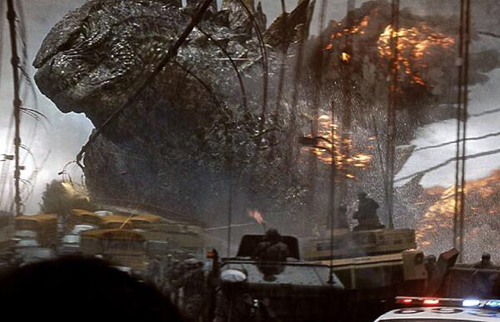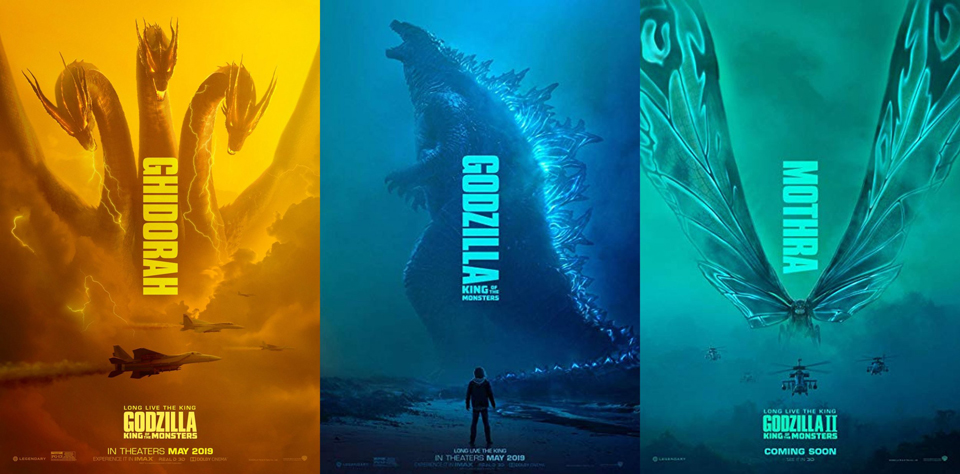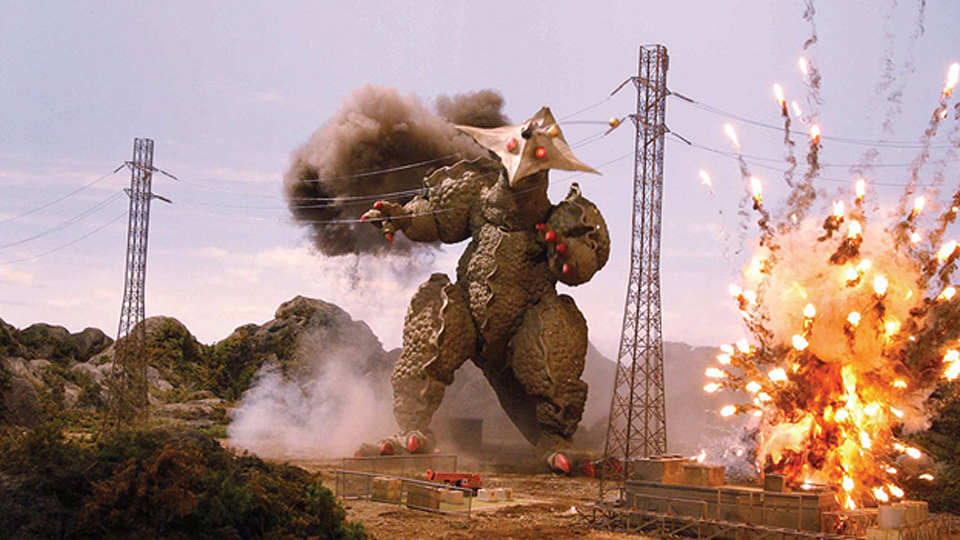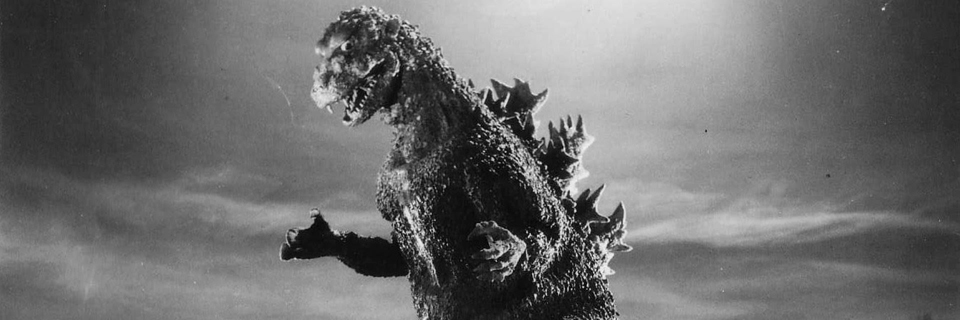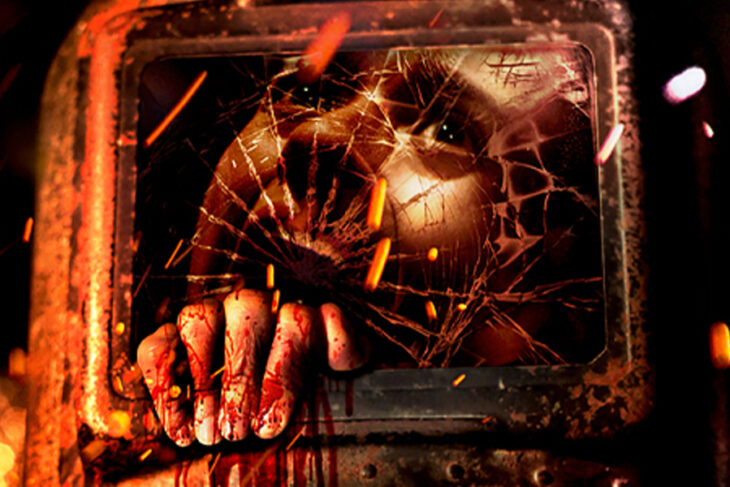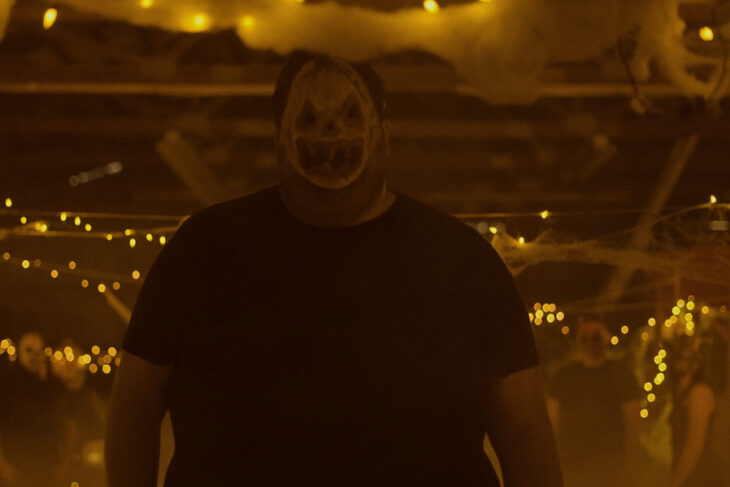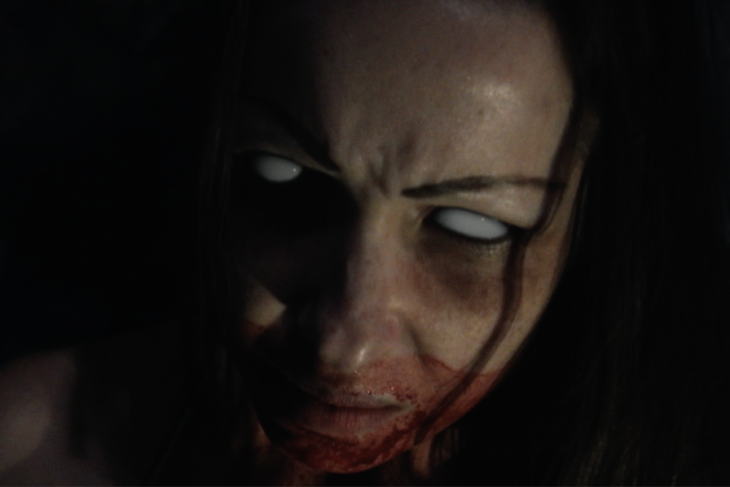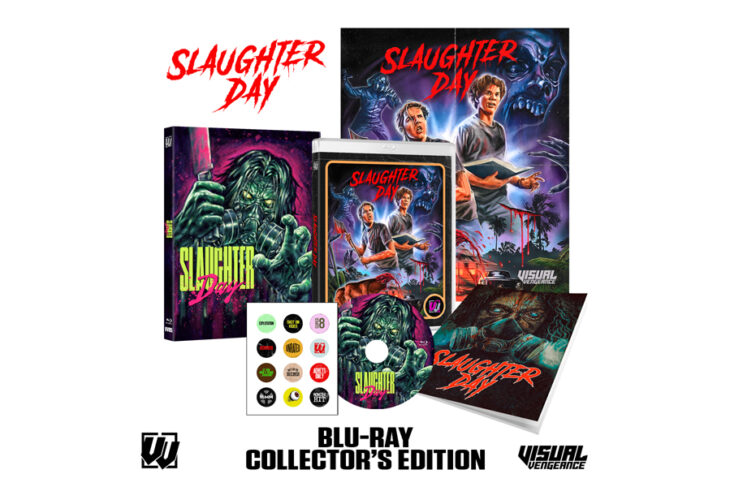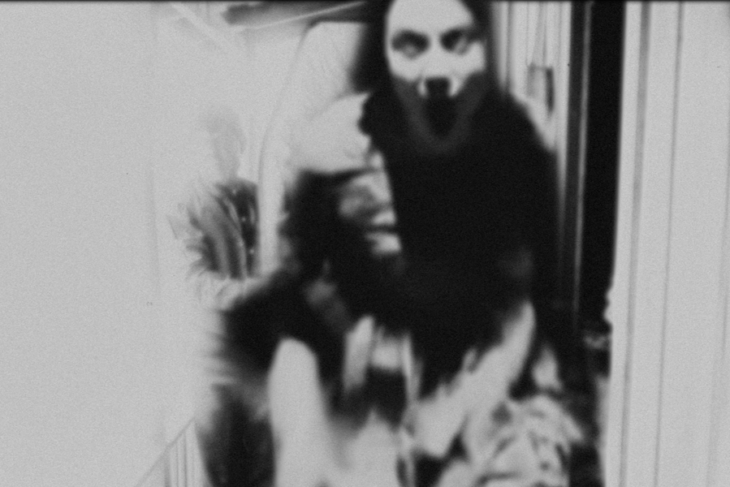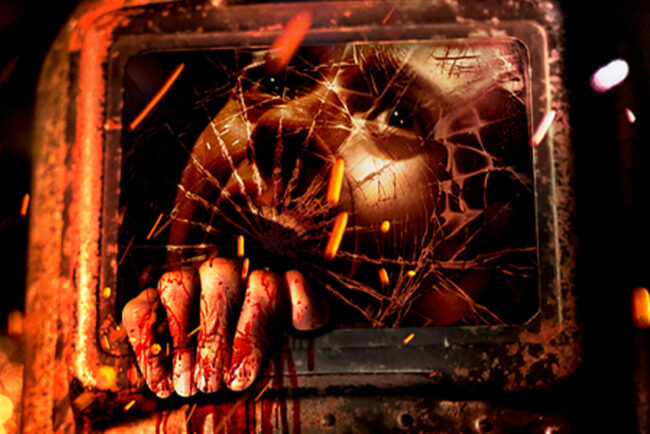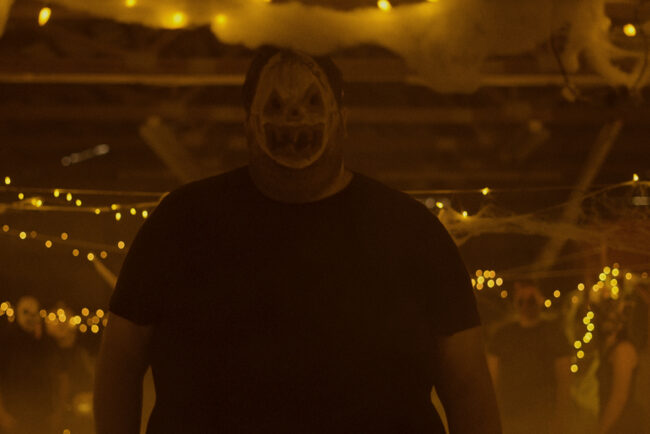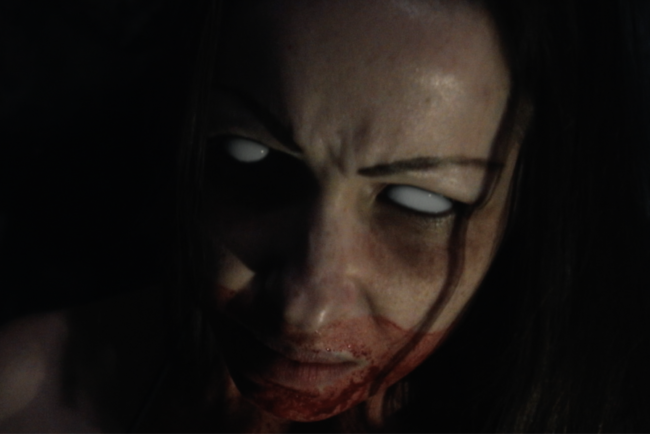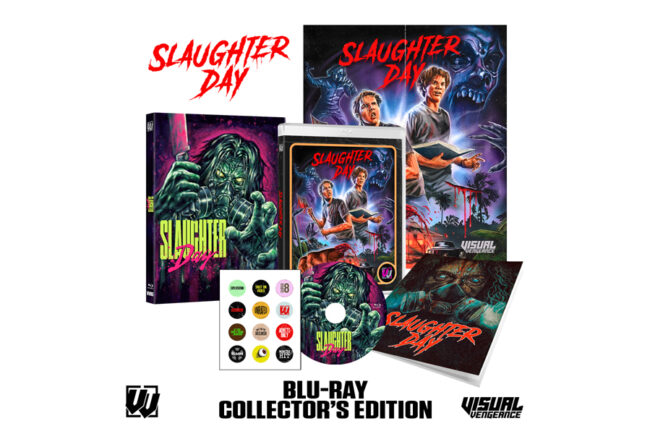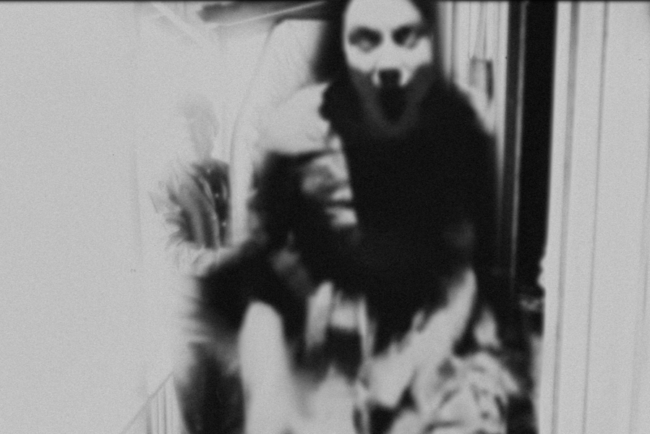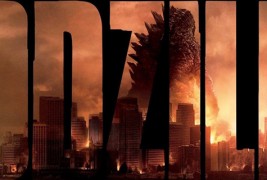
GODZILLA (2014): “Return of the King”
“History shows again and again
How nature points out the folly of man…”
—Godzilla Blue Oyster Cult
If at first you don’t succeed, try, try again. A trite cliché, but one that applies most definitely to this year’s reboot of Godzilla. You probably don’t need me to remind you what happened the last time America tried its hand at updating the iconic Japanese mega-monster…you may still be having nightmares about an overgrown iguana nicknamed GINO (Godzilla In Name Only), Matthew Broderick as an action hero and an abysmal flop that alienated fans old and new. But in these days of limited imagination, endless reboots and adaptations of well-known properties, it’s no surprise that Hollywood would go back to the drawing board once more.
I shall immediately put your mind at ease. Godzilla (2014) is not a replay of the Godzilla (1998) farce. No, it’s not exactly perfect and there are things that could have been improved on, but this version of the Big G gets many things right that its American predecessor got wrong.
I’m no newcomer to the “kaiju” (giant monster) flick genre. In fact, the Good Doctor’s high school nickname was Godzilla and I was known to drop everything short of a close relative’s funeral to watch any of the classic Japanese monster movies featuring Godzilla and his friends. It does take a special mentality to watch these films, which are sneered at by many, but there are enough puny humans who get a thrill from watching guys in monster suits bash the living hell out of each other and wreck miniature cities that Godzilla is second only to James Bond in the amount of films he has inspired over the years.
With all the mega-buildup, Godzilla (2014) may be the most financially successful of all. But will it appeal to old school kaiju fans such as myself as well as modern audiences used to typical summer “tentpole” movies? I think it’s got a pretty good chance.
Warner Brothers placed a tremendous amount of faith in little known director Gareth Edwards to bring this new version of Godzilla to life. Edwards’ only previous credit is 2010’s Monsters, a low key sci-fi movie where alien creatures played a secondary role to character drama. I have a mediocre opinion of Monsters, but there was a cool visual sense in how Edwards portrayed the strange jellyfish-like giant monsters in that film that boded well for Godzilla. On Godzilla, with exponentially bigger budget and resources, Edwards has created a jaw-droppingly different vision of raging giant creatures that’s truly revolutionary.
Of all previous Godzilla films, Edwards’ is most closely aligned with the 1954 original. Over the years, Godzilla has become a “good guy” and even a comical character, but in the very first movie, he was the essence of a brutal, rampaging behemoth. He was literally a walking nuclear bomb and that had special resonance in Japan, which had suffered two atomic bomb attacks less than a decade earlier. The name of the uncut 1954 film was Gojira (a combination of the Japanese words for “whale” and “gorilla”) and it was a stark black and white monster movie showing the terrible devastation Godzilla could inflict. One very famous scene in Gojira had a mother and two small children cowering as Godzilla destroyed Tokyo. The mother cries to her children, “Don’t worry, we’ll be together with Daddy again soon!” That sort of grimness was totally lacking from all later versions of the character.
Godzilla (2014) still portrays the Big Guy as the hero, which I do have some issues with. But one thing the new movie absolutely and completely gets right is the sense of scale. Godzilla and his mammoth foes, the MUTOs, are mind-bogglingly HUGE. The 1998 Godzilla was ruined by having the monster run and hide amidst the skyscrapers. Any kaiju fan knows that’s not right! In 2014, Godzilla is a living mountain that is virtually his own ecosystem. One cool little touch has him surrounded by hovering sea gulls when he is swimming, almost as if he is an island unto himself. Throughout the movie, Edwards is constantly reminding us how puny we humans are compared to Godzilla and the MUTOs. We see a length of tail whipping against the sky, a giant foot dwarfing the tanks next to it, a huge flank between skyscrapers. No giant monster movie has ever looked quite like this.
The cautionary aspects of nuclear power are also retained here. The first half of the movie can almost be compared to a conspiracy flick such as The China Syndrome. As in all good giant monster movies, man is shown as not being the master of nature as much as he thinks he is. We play with dangerous powers that may mean our doom. That’s a hoary old message, but still one that resonates.
The pacing of the film may be an issue to some. It’s often said that kaiju fans love to see monsters fighting and nothing else. Maybe the more brainless among us would prefer to cut out all human drama and just watch hours of giant creatures knocking each other silly, but not me. The 1954 Godzilla had a very slow and ominous build up to the monster’s first rampage. That’s the formula Edwards follows here. But when the rampage came in 1954, it delivered maximum destruction and Edwards comes up with plenty of destruction of his own. I knew from watching Monsters that he would also put some human drama into the story. It’s definitely here and may produce some grumbles, but Godzilla and the MUTOs are the heart and soul of the movie. Any Godzilla movie designed for mass consumption has to have some kind of human element.
Now let’s take a more detailed look at Godzilla (2014)…
The film first opens in the Philippines, where a huge and highly unusual mine collapse has drawn the attention of Dr. Ichiro Serizawa (Ken Watanabe), a man keenly interested in strange anomalies. Examination of the cave reveals what looks like the skeletal structure of a truly gigantic creature. This scene is the first one where we get a good look at the enormous scale director Edwards is dealing with. A worried Serizawa thinks that some huge radiation-sucking creature has hatched, causing the mine disaster. A trail of broken trees leads to the open sea….
In 1999 Japan, Joe Brody (Bryan Cranston) is the American administrator of a huge nuclear power plant. His wife Sandra and young son Ford are living nearby with him and all seems well, until an anomaly in the plant’s power grid appears. Soon the anomaly grows from troubling to catastrophic, as SOMETHING seems to be attacking the plant. A meltdown is under way and in a harrowing scene, Joe is forced to slam shut a containment door on Sandra and her crew, condemning them to death but saving the rest of the city.
Jumping ahead 15 years, Joe Brody is a troubled man who’s become obsessed with finding out what caused the meltdown. The site of the nuclear plant has become an abandoned “quarantine zone” where all citizens are kept out by force. Joe is convinced a tremendous cover-up is underway and he is arrested trying to penetrate the quarantine zone. Bailing him out of confinement is a grown up Ford (Aaron Taylor-Johnson), a soldier specializing in defusing bombs and who is estranged from his father and considers him something of a kook.
This early part of the film delves into the cover-up and conspiracy scenario, as well as the difficult relations between Joe and Ford. Of all the human characters and actors, Cranston alone creates one that is intense and memorable. Although Joe Brody is completely different, Cranston uses the same serious focus that he brought to his portrayal of Walter White in Breaking Bad. This movie is naturally focused on giant monsters, but when Cranston is on the screen, he dominates it. I wish I could say the same for Aaron Taylor-Johnson, who shows all the energy of a department store mannequin in his role of Ford Brody. He is one of many modern pretty boy actors who are pretty much interchangeable….I could see Ryan Reynolds playing Ford without a hitch. He doesn’t kill the movie, but in his scenes with Cranston, the older actor utterly dominates him.
Joe manages to convince Ford to accompany him into the quarantine zone to retrieve some old data that was left behind in their quickly abandoned house. The scenes in the empty, desolate city are eerie and effective, including a pack of wild dogs. Once again, though, father and son are captured by security forces, but this time they are brought to a secret facility on the site of the old power plant. There they find Serizawa and his assistant Ms. Graham, who are members of the secret organization MONARCH. They are studying an enormous monolith that seems to be alive and sending out pulses of energy. Serizawa realizes that Joe’s “crazy” research actually has a lot to say about what’s going on.
Just as Joe and Serizawa are coming to a meeting of the minds, a surge of power goes through the monolith, which has been absorbing radiation since the disaster. Suddenly the hard shell of the monolith cracks, revealing an unearthly monstrosity. This is our first look at a MUTO…a Massive Unknown Terrestrial Organism. These monsters are truly epic opponents for Godzilla. Thank God that Edwards realized that kaiju fans want to see Godzilla brawl with other gigantic beasts. The MUTOs are indeed bizarre…they resemble a combination of a giant spider with the wedge-headed alien kaiju Gyaos, a foe of the monster turtle Gamera. There’s even a bit of “Alien” to the creatures. The huge monster immediately destroys the MONARCH base and flies off into the night. An ancient terror has been unleashed on the world.
Ford Brody now becomes a soldier in the war against the awakened MUTO, which feeds on radiation and which also emits an EMP pulse that deadens all electronics within a certain radius. Along the way, he learns that MONARCH was formed in 1954 after Japan awoke an enormous “alpha predator” from the undersea depths. This first monster was Godzilla himself. The “atomic testing” in the Pacific was actually an attempt to destroy Godzilla, who has been dormant in all the long years since. Serizawa reveals that he thinks Godzilla and MUTO are survivors from millions of years ago, when there was much more radiation on the planet. These giant beasts have adapted to literally feed on radiation. Serizawa feels that Godzilla is a natural predator to the MUTOs and has arrived to provide balance.
From this point on, the movie becomes extremely militaristic in nature. If you enjoy seeing tanks, jets, military hardware and soldiers running around at full tilt, you’ll surely find a lot here to like. David Strathairn pops up as stiff-lipped General Stenz, who is in charge of battling Godzilla and the MUTOS. Every giant monster movie needs a stiff-lipped military man to anchor the action.
As if Godzilla and one MUTO weren’t enough trouble, word now comes that something enormous has broken out of a nuclear waste facility in Nevada and is ravaging Las Vegas. It is a second MUTO, a female. Mrs. MUTO is bigger than Mr. MUTO, but lacks his stylish wings. The two are now heading towards each other so they can mate and have a nice little MUTO family…which will pretty much mean lights out for the human race. After a detour in Hawaii, Mr. MUTO is headed to meet Mrs. in lovely San Francisco which happens to be Ford Brody’s home and also where his wife Elle (Elizabeth Olson) and young son Sam are living. And now, hot on the heels of the MUTOs, the mighty Godzilla is on the move to Frisco as well. He is ready to rumble with his ancient enemies no matter who gets in the way.
The US Army will never let monsters get away with killing more people than they can, so they come up with a plan to lure all the monsters offshore and annihilate them with a multi-megaton nuclear bomb. If Ford can manage to survive the monster throwdown, he’ll have to use his skills to disarm the nuke before his family is blown sky high.
Now the buildup is done and we get to see what we’ve waited for…giant monsters fighting each other and the army, while a major city crumbles in the background. And on this score, Edwards delivers in spades. After seeing carefully managed bits and pieces of the Big G, we now see him in all his mountainous glory as he cuts loose against the dangerous MUTO duo. The rest of the battle, as well as Ford’s race to defuse the nuke, I will leave for you to discover.
I have always had a lot of reservations about a CGI Godzilla. Some laugh at the “man in the suit” effects of the old Japanese movies but they were part and parcel of the kaiju experience. Those rubber suit monsters had a mass and solidity which computer generated effects just couldn’t match. But again, I have to tip my hat to Edwards and the crew behind Godzilla (2014). They have created the monsters in such a way that they not only look substantial, but their true size is overwhelming. Also, the destruction of San Francisco and other cities is disturbingly authentic.
Gareth Edwards has “Nolanized” the Godzilla experience in this film. By that, I mean he has done the same thing for Godzilla that Christopher Nolan did for Batman with his trilogy of films. He has placed utter fantasy in a very real context. There is one scene in the film where a flaming jet smashes into a skyscraper, causing it to fall. Anybody who sees that scene will be reminded of 9/11. But the devastation here is on a much bigger scale.
The soundtrack and score is excellent. The music does have a very welcome “old school” feel to it with a lot of brass. Of course, the original Japanese score by the great Akira Ifukube will never be topped as far as memorability goes, but this is no embarrassment. Also, the bass sound in this film will blow you through the wall. There’s a huge THRUMMM when Godzilla first appears that is almost a physical blow. Godzilla’s roar is louder and prouder than ever, while the MUTOs get their own creepy “click and creak” sound effect. This is a LOUD movie.
Another notable scene I’d like to mention is the tsunami scene in Hawaii, where just the mere passage of Godzilla causes Honolulu to be flooded. There’s also a great night-time MUTO attack on a military train transporting the nuclear bomb that is both haunting and thrilling. And the mass jump of Special Forces soldiers into the ruins of San Francisco is also beautifully done.
Ken Watanabe’s Dr. Serizawa is an acknowledgment to the original Serizawa character in the 1954 film. Here, though, Edwards come up short. Watanabe’s main function is to look worried and spout scientific dialogue about the monsters. In the original film, Serizawa was a much more memorable character—a tortured one-eyed scientist who creates a weapon more destructive than Godzilla himself, the “oxygen destroyer”. In another tip of the hat to classic Godzilla films, there’s a little Japanese boy complete with red baseball cap and shorts that Ford protects during a monster raid. In most of the ‘60s and ‘70s Godzilla films, there was usually such a kid running around saying, “Don’t hurt Godzilla! He’s our friend!”
I do have reservations with Godzilla being the hero here. Most of the ads and trailers made him look like the supreme unstoppable menace, his original conception back in 1954. I wish they would have done a film that brings back the HORROR of Godzilla—a merciless giant monster. Although we don’t get the “cutesy” hero Godzilla here, by the end there is no doubt he is our savior. I’d like to someday see him return as menace, but that won’t be this movie.
Overall, Godzilla (2014) is a positive experience and one enjoyed by this here raging monster fanatic. It surely obliterates all traces of GINO from the landscape. Will there be a sequel? Watch the last scene and you tell me….


